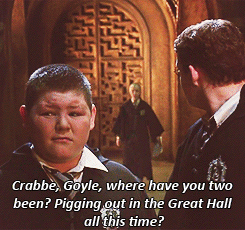Seeing Stable Topology Using Instabilities

Seeing stable topology using instabilities
We are most familiar with the four conventional phases of matter: solid, liquid, gas, and plasma. Changes between two phases, known as phase transitions, are marked by abrupt changes in material properties such as density. In recent decades a wide body of physics research has been devoted to discovering new unconventional phases of matter, which typically emerge at ultra-low temperatures or in specially-structured materials. Exotic “topological” phases exhibit properties that can only change in a quantized (stepwise) manner, making them intrinsically robust against impurities and defects.
In addition to topological states of matter, topological phases of light can emerge in certain optical systems such as photonic crystals and optical waveguide arrays. Topological states of light are of interest as they can form the basis for future energy-efficient light-based communication technologies such as lasers and integrated optical circuits.
However, at high intensities light can modify the properties of the underlying material. One example of such a phenomenon is the damage that the high-power lasers can inflict on the mirrors and lenses. This in turn affects the propagation of the light, forming a nonlinear feedback loop. Nonlinear optical effects are essential for the operation of certain devices such as lasers, but they can lead to the emergence of disorder from order in a process known as modulational instability, as is shown in Figure 1. Understanding the interplay between topology and nonlinearity is a fascinating subject of ongoing research.
Read more.
More Posts from Smparticle2 and Others

Failing to find a single functioning stapler, the grad student struggles to keep things together.
Why Webb Needs to Chill
Our massive James Webb Space Telescope is currently being tested to make sure it can work perfectly at incredibly cold temperatures when it’s in deep space.
How cold is it getting and why? Here’s the whole scoop…
Webb is a giant infrared space telescope that we are currently building. It was designed to see things that other telescopes, even the amazing Hubble Space Telescope, can’t see.

Webb’s giant 6.5-meter diameter primary mirror is part of what gives it superior vision, and it’s coated in gold to optimize it for seeing infrared light.

Why do we want to see infrared light?
Lots of stuff in space emits infrared light, so being able to observe it gives us another tool for understanding the universe. For example, sometimes dust obscures the light from objects we want to study – but if we can see the heat they are emitting, we can still “see” the objects to study them.
It’s like if you were to stick your arm inside a garbage bag. You might not be able to see your arm with your eyes – but if you had an infrared camera, it could see the heat of your arm right through the cooler plastic bag.

Credit: NASA/IPAC
With a powerful infrared space telescope, we can see stars and planets forming inside clouds of dust and gas.

We can also see the very first stars and galaxies that formed in the early universe. These objects are so far away that…well, we haven’t actually been able to see them yet. Also, their light has been shifted from visible light to infrared because the universe is expanding, and as the distances between the galaxies stretch, the light from them also stretches towards redder wavelengths.
We call this phenomena “redshift.” This means that for us, these objects can be quite dim at visible wavelengths, but bright at infrared ones. With a powerful enough infrared telescope, we can see these never-before-seen objects.

We can also study the atmospheres of planets orbiting other stars. Many of the elements and molecules we want to study in planetary atmospheres have characteristic signatures in the infrared.

Because infrared light comes from objects that are warm, in order to detect the super faint heat signals of things that are really, really far away, the telescope itself has to be very cold. How cold does the telescope have to be? Webb’s operating temperature is under 50K (or -370F/-223 C). As a comparison, water freezes at 273K (or 32 F/0 C).
How do we keep the telescope that cold?
Because there is no atmosphere in space, as long as you can keep something out of the Sun, it will get very cold. So Webb, as a whole, doesn’t need freezers or coolers - instead it has a giant sunshield that keeps it in the shade. (We do have one instrument on Webb that does have a cryocooler because it needs to operate at 7K.)

Also, we have to be careful that no nearby bright things can shine into the telescope – Webb is so sensitive to faint infrared light, that bright light could essentially blind it. The sunshield is able to protect the telescope from the light and heat of the Earth and Moon, as well as the Sun.

Out at what we call the Second Lagrange point, where the telescope will orbit the Sun in line with the Earth, the sunshield is able to always block the light from bright objects like the Earth, Sun and Moon.

How do we make sure it all works in space?
By lots of testing on the ground before we launch it. Every piece of the telescope was designed to work at the cold temperatures it will operate at in space and was tested in simulated space conditions. The mirrors were tested at cryogenic temperatures after every phase of their manufacturing process.

The instruments went through multiple cryogenic tests at our Goddard Space Flight Center in Maryland.

Once the telescope (instruments and optics) was assembled, it even underwent a full end-to-end test in our Johnson Space Center’s giant cryogenic chamber, to ensure the whole system will work perfectly in space.

What’s next for Webb?
It will move to Northrop Grumman where it will be mated to the sunshield, as well as the spacecraft bus, which provides support functions like electrical power, attitude control, thermal control, communications, data handling and propulsion to the spacecraft.

Learn more about the James Webb Space Telescope HERE, or follow the mission on Facebook, Twitter and Instagram.
Make sure to follow us on Tumblr for your regular dose of space: http://nasa.tumblr.com.
NSF’s Science360 Photo of the Week
This is a close-up view of the beam created by a vortex laser.

Because the laser beam travels in a corkscrew pattern, encoding information into different vortex twists, it’s able to carry 10 times or more the amount of information than that of conventional lasers. The optics advancement could become a central component of next-generation computers designed to handle society’s growing demand for information sharing. Image credit: Natalia Litchinitser, University at Buffalo
Like this photo? Sign up for NSF’s Science360 News Service at news.science360.gov for a daily dose of STEM radio, news, videos and more cool images like this.




In California’s Salinas Valley, known as the “Salad Bowl of the World,” a push is underway to expand agriculture’s adoption of technology. Special correspondent Cat Wise reports on how such innovation is providing new opportunities for the Valley’s largely Hispanic population. Watch her full piece here: http://to.pbs.org/2gLmEga

Chemists discover structure of bacterial enzyme that generates useful polymers
MIT chemists have determined the structure of a bacterial enzyme that can produce biodegradable plastics, an advance that could help chemical engineers tweak the enzyme to make it even more industrially useful.
The enzyme generates long polymer chains that can form either hard or soft plastics, depending on the starting materials that go into them. Learning more about the enzyme’s structure could help engineers control the polymers’ composition and size, a possible step toward commercial production of these plastics, which, unlike conventional plastic formed from petroleum products, should be biodegradable.
“I’m hoping that this structure will help people in thinking about a way that we can use this knowledge from nature to do something better for our planet,” says Catherine Drennan, an MIT professor of chemistry and biology and Howard Hughes Medical Institute Investigator. “I believe you want to have a good fundamental understanding of enzymes like this before you start engineering them.”
Read more.
![Fangirl Challenge - [3/10] Relationships - House × Chase (House)](https://64.media.tumblr.com/ba39df3e591a628bb51531e101a0bd83/tumblr_n6733lVTiN1qattp2o1_250.gif)
![Fangirl Challenge - [3/10] Relationships - House × Chase (House)](https://64.media.tumblr.com/89350bb562e5b7438e89b40c54f3f38d/tumblr_n6733lVTiN1qattp2o2_250.gif)
![Fangirl Challenge - [3/10] Relationships - House × Chase (House)](https://64.media.tumblr.com/3c369c0e314ca02ddf319a8f857dc6e5/tumblr_n6733lVTiN1qattp2o3_250.gif)
![Fangirl Challenge - [3/10] Relationships - House × Chase (House)](https://64.media.tumblr.com/951b590fe5d8f558a110ba8c63c176d3/tumblr_n6733lVTiN1qattp2o6_250.gif)
![Fangirl Challenge - [3/10] Relationships - House × Chase (House)](https://64.media.tumblr.com/184e091116a6920d252179567253c99f/tumblr_n6733lVTiN1qattp2o5_250.gif)
![Fangirl Challenge - [3/10] Relationships - House × Chase (House)](https://64.media.tumblr.com/43d5c9e63efce8b279a2e0af56908139/tumblr_n6733lVTiN1qattp2o4_250.gif)
![Fangirl Challenge - [3/10] Relationships - House × Chase (House)](https://64.media.tumblr.com/3f9461e07ba89f1ab95154a41d68007f/tumblr_n6733lVTiN1qattp2o8_250.gif)
![Fangirl Challenge - [3/10] Relationships - House × Chase (House)](https://64.media.tumblr.com/b1459046acd556bc3085e4c7a8faff8b/tumblr_n6733lVTiN1qattp2o9_250.gif)
![Fangirl Challenge - [3/10] Relationships - House × Chase (House)](https://64.media.tumblr.com/7860f3fa1231be8d4efe4c3ba2ac8684/tumblr_n6733lVTiN1qattp2o7_250.gif)
![Fangirl Challenge - [3/10] Relationships - House × Chase (House)](https://64.media.tumblr.com/43debeb17b11e4cc54e5e92eeeb226df/tumblr_n6733lVTiN1qattp2o10_250.gif)
Fangirl Challenge - [3/10] relationships - House × Chase (House)

Zillertal Alps // Tom Klocker


Dead Poets Society (1989)
Dutch trains now all powered by wind energy

All Dutch trains have become 100% powered by electricity generated by wind energy, the national railway company NS has said, making it a world’s first.
One windmill running for an hour can power a train for 120 miles, the companies said. Dutch electricity company Eneco won a tender offered by NS two years ago and the two companies signed a 10-year deal setting January 2018 as the date by which all NS trains should run on wind energy. ‘We in fact reached our goal a year earlier than planned,” said NS spokesman Ton Boon, adding that an increase in the number of wind farms across the country and off the coast of the Netherlands had helped NS achieve its aim.
They hope to reduce the energy used per passenger by a further 35% by 2020 compared with 2005.






-
 smparticle2 reblogged this · 4 years ago
smparticle2 reblogged this · 4 years ago -
 why-am-i-on-this-website-anyway liked this · 4 years ago
why-am-i-on-this-website-anyway liked this · 4 years ago -
 cripple-cat liked this · 4 years ago
cripple-cat liked this · 4 years ago -
 dredpiratelou liked this · 4 years ago
dredpiratelou liked this · 4 years ago -
 luckyy-13 liked this · 4 years ago
luckyy-13 liked this · 4 years ago -
 intelligentliving reblogged this · 4 years ago
intelligentliving reblogged this · 4 years ago -
 joseecruz liked this · 4 years ago
joseecruz liked this · 4 years ago -
 safaannissa liked this · 4 years ago
safaannissa liked this · 4 years ago -
 readinglist32 liked this · 4 years ago
readinglist32 liked this · 4 years ago -
 swordsagedachsie liked this · 4 years ago
swordsagedachsie liked this · 4 years ago -
 iamtherapemannow liked this · 4 years ago
iamtherapemannow liked this · 4 years ago -
 vz46 liked this · 4 years ago
vz46 liked this · 4 years ago -
 materialsscienceandengineering reblogged this · 4 years ago
materialsscienceandengineering reblogged this · 4 years ago